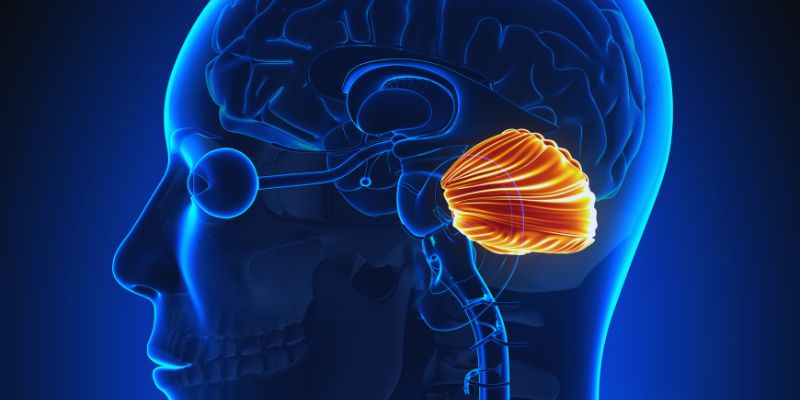Do I Have Anxiety or Just Worry? Key Differences
Anxiety and worry are feelings that everyone feels, but they differ. Worry is a normal reaction to a lack of certainty or problems, whereas anxiety can be more extreme, persistent, and debilitating to everyday life. It is important to know the difference in determining how they impact your mental wellness. In this article, we will discuss the major differences between worry and anxiety, look at their symptoms, and give you advice on managing them effectively.
What Is Worry?

Worry is a short-term mental and emotional process that is initiated by particular situations or difficulties. It tends to be characterized by repetitive thoughts regarding potential adverse consequences or problems but is still centered on one issue. In contrast to anxiety, worry is more controllable and less incapacitating.
Common Characteristics of Worry
Anxiety usually stems from some underlying issues and can most often be relieved once the matter has been settled. The following are some typical traits of worry that assist in distinguishing it from anxiety.
Focused on specific problems or scenarios
They are specific challenges created by specific circumstances that require priority. They're not usually based on larger long-term issues, but rather in solving immediate and specific problems such as meeting a deadline or a customer complaint. By limiting the scope of the problem, they can concentrate on tangible solutions rather than feeling hopeless. It assists in prioritization and addressing challenges in an orderly manner.
Short-term and situational
These challenges are temporary and require quick resolution. They emerge in specific situations and are resolved once addressed, such as fixing a technical issue during a presentation. Their short-term nature makes them less likely to cause long-term stress, allowing individuals to deal with them promptly and stay on track.
Relatively controllable
These problems are manageable and within an individual’s influence. For example, reorganizing a schedule to adapt to last-minute changes is straightforward and avoids lingering difficulties. Resolving such issues quickly provides a sense of control, helping individuals stay productive and focus on other tasks.
Accompanied by problem-solving efforts
Individuals often respond to these challenges with proactive problem-solving. This includes identifying the issue, brainstorming solutions, and implementing an action plan. For example, if a team project is delayed, scheduling extra work sessions or reallocating tasks can help overcome the setback. Taking action ensures the problem is resolved efficiently, minimizing its impact on other responsibilities.
Examples of Typical Worries in Daily Life
- Concern about an upcoming work deadline or presentation.
- Worrying about getting stuck in traffic before a meeting.
- Thinking about financial responsibilities, like paying bills on time.
- Imagining potential misunderstandings during a social gathering.
What Is Anxiety?

Anxiety is a natural response to stress, marked by tension, worry, and physical symptoms like a racing heart. It helps us stay alert in tough situations but can disrupt daily life when excessive or persistent.
Normal Anxiety vs. Disordered Anxiety
Normal anxiety is temporary and linked to specific events or stressors, such as a job interview or a big exam. It fades once the situation resolves and often motivates individuals to prepare or perform better. Disordered anxiety, on the other hand, persists even in the absence of immediate stressors and can occur without a clear trigger. It is marked by excessive, irrational worry and fear that interfere with daily activities, relationships, and overall well-being. This distinction is crucial as it determines when an individual might need professional support.
Symptoms and Signs of Anxiety
Individuals experiencing anxiety, whether normal or disordered, may exhibit physical, emotional, and behavioral symptoms. Common symptoms include:
- Physical Symptoms: Increased heart rate, sweating, trembling, muscle tension, headaches, or gastrointestinal issues.
- Emotional Symptoms: Persistent worry, irritability, feelings of dread, or difficulty concentrating.
- Behavioral Symptoms: Avoidance of certain situations, restlessness, or compulsive behaviors aimed at easing distress.
Key Differences Between Worry and Anxiety
While worry and anxiety may seem similar, there are critical differences that help distinguish between the two.
1.Intensity and Duration of Feelings
Worry is typically short-lived and tied to a specific concern, often easing once the issue is resolved. Anxiety, however, tends to be more intense and can persist even in the absence of a clear threat. It often involves overwhelming feelings that are not proportionate to the situation, lasting for weeks or months. This prolonged intensity can take a significant toll on both mental and physical well-being over time.
2.Physical and Emotional Responses
Physical responses to worry are usually mild, such as occasional tension or trouble sleeping. Anxiety, on the other hand, can trigger more severe physical symptoms like chest tightness, dizziness, or panic attacks, alongside deeper emotional impacts like heightened fear and numbness. These responses often feel uncontrollable, compounding the individual’s stress levels. The overlap of physical and emotional symptoms in anxiety differentiates it from the more straightforward experience of worry.
3.Impact on Daily Functioning
Worry can be a motivating factor, prompting action to address a problem, with minimal disruption to daily life. Anxiety, conversely, can interfere significantly with everyday activities, making it hard to focus at work, maintain social connections, or manage responsibilities. It may lead to avoidance behaviors, impairing personal and professional growth. This persistent interference underscores the need to address anxious symptoms before they escalate further.
When to Seek Help
If you find yourself experiencing symptoms of anxiety that significantly impact your daily functioning, your relationships, or your ability to enjoy life, and these feelings persist for extended periods, it's essential to seek help from a mental health professional.
They can assess your situation, provide an accurate diagnosis, and create a personalized treatment plan that may include therapy, lifestyle adjustments, or, in some cases, medication to help you regain control and improve your quality of life. Remember, reaching out for help is a crucial and courageous first step toward healing.
Tips for Managing Anxiety and Worry
Both worry and anxiety can be challenging to manage, but there are strategies that can help.
- Practice relaxation techniques like deep breathing, meditation or yoga.
- Engage in regular physical activity to reduce tension and improve mood.
- Identify triggers and challenge irrational thoughts with positive self-talk.
- Set realistic goals and prioritize tasks to avoid feeling overwhelmed.
- Build a support network of trusted friends, family or therapists who can provide guidance and emotional support.
- Seek professional help through therapy, medication or a combination of both, if necessary.
Conclusion
Worry and anxiety are common experiences that individuals face in their daily lives. While they share some similarities, the key differences lie in intensity, duration, and impact on daily functioning. It's crucial to recognize when normal worry may have evolved into an anxiety disorder and seek appropriate help to manage symptoms effectively. With proper support and self-care strategies, it is possible to overcome anxious thoughts and live a fulfilling life. However, if symptoms persist or worsen, it is essential to reach out for professional help to address and manage the underlying anxiety disorder.












